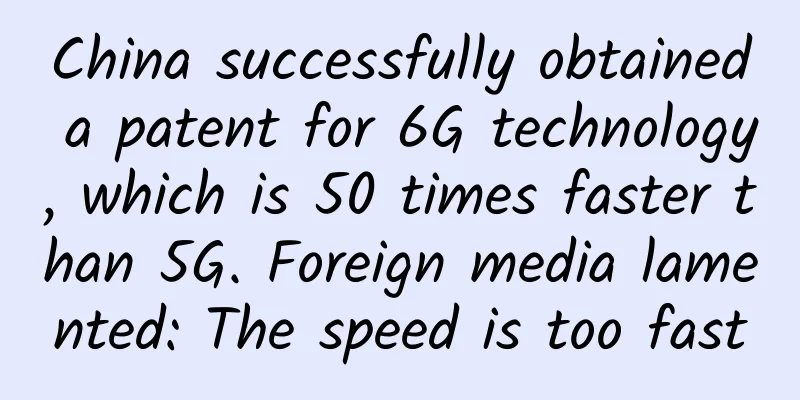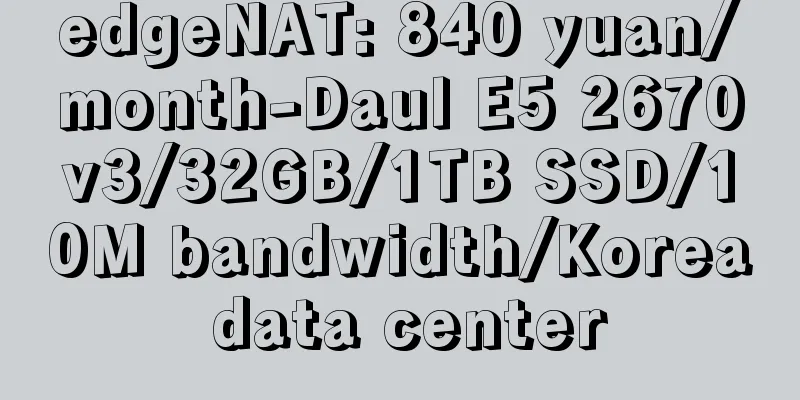Understand 3GPP 5G versions and the features of each version

|
While for years cellular technology has been primarily targeted at consumer use cases, the 5G version from the 3rd Generation Partnership Project (3GPP) will focus on new features for business and enterprises. 3GPP is a consortium of telecommunications standards organizations that was originally formed to establish global specifications and standards for 3G technology. 3GPP is still actively working and committed to creating new releases that include standardized features and specifications for 5G technology that developers can use and implement. Balazs Bertenyi, chairman of 3GPP Radio Access Network (RAN), said that 5G, and 5G technology in general, is expected to be completed and put into commercial use faster than previous generations of cellular technology.
3GPP holds four meetings each year, at the end of each quarter, to plan and develop new releases that will improve on previous releases and provide new standardized features. As technology and user needs continue to change, 3GPP may add more features, and they have already launched four releases for 5G, namely R15, R16, R17 and R18. Let’s take a look at the existing 3GPP 5G RAN release timeline and the key features of each release, as well as the impact the COVID-19 pandemic has had on the 3GPP timeline—which is also affecting operators’ 5G deployment timelines. 3GPP Release 15 Phase 1 Timeline. 3GPP approved the initial package for Release 15 in March 2017, the group’s first meeting of 2017. Release 15 almost immediately demonstrated that it would be different from its predecessors and successors in that it had three RAN phases, whereas most releases had only one. Bertenyi said the first version will focus on mobile broadband with a non-standalone (NSA) 5G architecture. NSA architecture means 5G will require 4G as a foundation, with 5G on top to increase capacity or network speeds. The first RAN freeze for Release 15 took place in December 2017. After the freeze, the specifications could not be changed and the phase was complete. The first freeze completed the physical layer of the first phase of Release 15, which Bertenyi said was the first aspect that 3GPP had completed in the RAN. Following a fairly standard freeze schedule for 3GPP releases, the protocol freeze took place three months later in March 2018. Important features. The first phase is important because it introduces 5G and the initial 5G features. It brings speed and capacity improvements, as well as mobile broadband, which Bertenyi calls the cellular focus, and lays the foundation for more advanced technologies such as multiple-input multiple-output. The first generation also introduced 5G New Radio technology, as well as specifications for the development of 5G NR hardware. “From an industry perspective, this is perhaps the most important factor at this early stage: It allows the early difficulties of new cellular technology to be worked out,” Bertenyi said. Phase II Timeline. For the second phase, which Bertenyi calls the "main phase" of the Release 15 release, the physical layer freeze occurred in June 2018 and introduced the standalone (SA) 5G architecture. As opposed to the NSA architecture, the SA architecture enables 5G to exist without a 4G foundation. The protocol work freeze occurred at the 3GPP meeting in September 2018. Important features. Bertenyi said that in addition to the 5G architecture, there is a full set of 5G features, including the building blocks of 5G: the core network architecture, which makes the SA architecture possible. Another feature of the 5G full suite is ultra-reliable low latency, a level of connectivity that enables fast response and reliable long-distance communications. Bertenyi called it "the real 5G game changer." Phase 3 Timeline. The third and final physical layer freeze of Release 15 occurred in March 2019, and the protocol freeze was completed three months later, in June 2019. This freeze ended Release 15. According to technology journalist Dan Jones, this also allowed 5G to support commercial use cases by the end of 2019, and US operators began to deploy their own 5G technology. Important features. The "final phase," as Bertenyi calls it, is less dramatic than the other two phases of Release 15 because it introduces various architectures standardized by 3GPP to ease the migration from 4G to 5G. However, these architectures are not required for the migration because 5G can use dynamic spectrum sharing (DSS) (introduced later in Release 16) and share spectrum with existing 4G connections. Therefore, this phase is not critical to the overall 5G functionality. 3GPP Release 16 Timeline. 3GPP approved the Release 16 package in June 2018. The group typically approves the initial package for the next version at the same meeting that freezes the standard they are currently working on, so 3GPP approved the Release 16 package and froze the physical layer work of the second (or main) phase of Release 15 at the same time. The freeze of the physical layer of Release 16 took place in December 2019. The delay from approval in June 2018 to the freeze in December 2019 was probably due to the fact that several phases of Release 15 needed to be completed before Release 16. Subsequently, 3GPP froze the work and features of Release 16 in June 2020. While 3GPP typically completes physical layer and protocol work within three months, the COVID-19 pandemic forced the group to hold virtual meetings starting in March 2020, delaying their work on Release 16 and beyond. Important features. R16 continues the features of the previous R15 (such as mobile broadband), and also introduces DSS, network slicing and features designed for 5G private networks. Jones said network slicing is a key part of R16 because it allows enterprises to change aspects of their networks over time. In this release, 5G begins to focus on enterprise and business applications. Both Jones and Bertenyi noted that private 5G networks and network slicing capabilities will primarily benefit enterprise use cases rather than consumers and begin to blur the lines between strictly cellular and strictly Wi-Fi capabilities. “A lot of elements of a Wi-Fi network don’t inherently support all of these radio capabilities,” Bertenyi said. “Wi-Fi is great—it’s relatively cheap and easy to configure—but it’s never going to be able to support ultra-reliable low latency, for example, if that’s what your network needs.” 3GPP Release 17 Timeline. 3GPP froze the physical layer work for Release 16 in its December 2019 meeting while approving the Release 17 package. COVID-19 has had the biggest impact on Release 17 so far, as much of the work for this release is being done virtually. 3GPP is a global business, which could further complicate the existing complexities of video conferencing. The pandemic delayed the initial schedule for Release 17 by about six months. 3GPP held a meeting in December 2020 to discuss the updated Release 17 schedule and issued a formal announcement after the meeting detailing the current estimated schedule for Release 17. The planned dates for the physical layer, functional and protocol work freezes for Release 17 are December 2021, March 2022 and June 2022, respectively. This timeline assumes that 3GPP resumes face-to-face meetings from June 2021, but may change depending on the ongoing threat of COVID-19. Important features. Like Release 16, Release 17 will improve upon features in Releases 15 and 16, including DSS and private 5G network capabilities. Release 17 will also introduce new features, such as improved battery health and satellite access. Bertenyi said that for many years, satellite companies have mainly used proprietary radio technologies and have struggled with them. With the advent of 5G, many of these companies are looking to use 5G NR for their satellite radio technologies and successfully push them to 3GPP. “For Release 17, we are actually doing the first phase of making NR work for satellite access,” Bertenyi said. 3GPP R18 and later 4G took 10 years and six different 3GPP releases to achieve the features it ultimately provided, so 5G may include multiple releases. After the December 2020 meeting, 3GPP updated its publicly recorded information to include R18 as the 5G release. The COVID-19 pandemic has delayed the progress of Release 18, as 3GPP has been unable to meet face-to-face to discuss, debate and finalize Release 18 features, and the group expects face-to-face meetings to begin again in June 2021. 3GPP's projected timeline hopes that the group will approve the initial package for Release 18 in December 2021 - the group plans to freeze the physical layer work of Release 17 at the same meeting. Still, it will all depend on whether the group can get together again, or if it will be forced to continue meeting virtually for the foreseeable future. |
>>: Why is the 5G signal weak and the network keeps dropping? Here is the truth
Recommend
Z-Wave not concerned about potential threats from Project CHIP
This year marks the 20th anniversary of Z-Wave be...
What role does Wi-Fi-6 play in the field of industrial IoT?
5G technology has enough advantages to support so...
The virtual world's "express delivery system" is upgraded again, what is IPv6+?
This article is reproduced from Leiphone.com. If ...
Qianxinan Prefecture Government: Green "optical" network, a new style of government office
The Qianxinan Prefecture Government, as an autono...
Ruizhi Big Data: Injecting Intelligent Genes into Dual-State IT
In the summer of 2019, a set of data about China&...
Gossip about the upcoming 5G era: the three-player pattern
5G is coming soon, and now is the eve of it. Let&...
HortonworksTed Yu: China's participation in international exchanges is accelerating
[Original article from 51CTO.com] On November 25-...
spinservers: $199/month - 2*E5-2696v4, 512G memory, 4*1.6T SSD hard disk, 1Gbps unlimited traffic, Dallas data center
spinservers offers special discount codes for two...
3 Ways 5G is Driving Edge Intelligence
5G is closely tied to edge computing. With a whol...
The 2018 Secada Excellent Product Award selection is about to start
In order to support technological innovation, hel...
UFOVPS National Day promotion starts at 30% off, top up 200 yuan and get 20 yuan, Hong Kong CN2/Japan CN2 optional
UFOVPS is currently carrying out a National Day p...
RepriseHosting: 30% off Seattle servers, L5640/16GB/1TB/10TB starting at $27/month
The tribe has shared information about RepriseHos...
Three years after the license was issued, has 5G commercialization been successful?
It coincides with the third anniversary of China...
Can the Internet provide personalized services? Learn more about IMEIsv's differentiated protection
In the current network, if the same RRM (Radio Re...


![[5.1] Megalayer limited time sale, E3-1230/8G US & Hong Kong server starting from 199 yuan/month](/upload/images/67cabed77271f.webp)


![[6.18] TmhHost 30% off on all VPS, Japan/Hong Kong/Los Angeles CN2 GIA/AS9929 monthly payment starting from 21 yuan](/upload/images/67cabea213fd6.webp)



